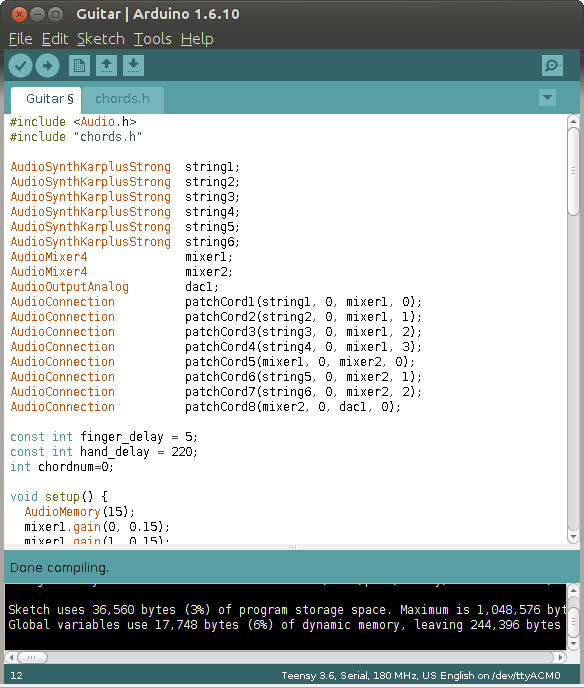Paul Stoffregen has been making Teensy USB MCU development boards since 2008, and has just launched the latest Teensy 3.5 & 3.6 boards powered by NXP (previously Freescale) Kinetis K64 & K66 ARM Cortex-M4 MCUs with a micro USB port for power and programming, a micro SD slot, and several I/Os.

Boards specifications:
- MCU
- Teensy 3.5 (T3.5) – NXP Kinetis K64 ARM Cortex M4 MCU @ 120 MHz with FPU, 512KB flash, 192 KB RAM, 4K EEPROM
- Teensy 3.6 (T3.6) – NXP Kinetis K66 ARM Cortex M4 MCU @ 180 MHz with FPU, 1MB flash, 256KB RAM, 4K EEPROM
- Storage – micro SD card port
- USB – 1x USB Full Speed (12 Mbit/sec) Port; T3.6 only: 480 Mbit/sec host port
- Connectivity – 10/100M Ethernet mac
- 62x I/O Pins (42 breadboard friendly)
- 25x Analog Inputs to 2 ADCs with 13 bits resolution
- 2x Analog Outputs (DACs) with 12 bit resolution
- 20x PWM Outputs
- 6x Serial Ports (2 with FIFO & Fast Baud Rates)
- I2S Audio Port, 4 Channel Digital Audio Input & Output
- 3x SPI Ports (1 with FIFO), 4x I2C Ports
- CAN bus – T3.5: 1x; T3.6: 2x
- 14x Hardware Timers
- General Purpose DMA channels – T3.5: 16x; T3.6: 32x
- 11x Touch sensing inputs (T3.6 only)
- Security – Cryptographic Acceleration Unit, Random Number Generator, CRC Computation Unit
- Misc – Real Time Clock; Teensy 3.5 only: 5V tolerance on all digital I/Os.
- Dimensions – N/A
The main way to developer for the board is via the Arduino IDE. You’ll find documentation and sample projects about the older boards on PJRC.com, as well as an active developer community.
The boards launched on Kickstarter yesterday, and already vastly surpassed its funding target having raised around $45,000 from 700+ backers out of a goal of $5,000. Teensy 3.5 requires a $23 pledge, while you’ll need to pledge $28 for Teensy 3.6. Shipping adds $4 to $5 to the costs, and delivery is scheduled for October 2016.
Thanks to Nanik for the tip!

Jean-Luc started CNX Software in 2010 as a part-time endeavor, before quitting his job as a software engineering manager, and starting to write daily news, and reviews full time later in 2011.
Support CNX Software! Donate via cryptocurrencies, become a Patron on Patreon, or purchase goods on Amazon or Aliexpress






